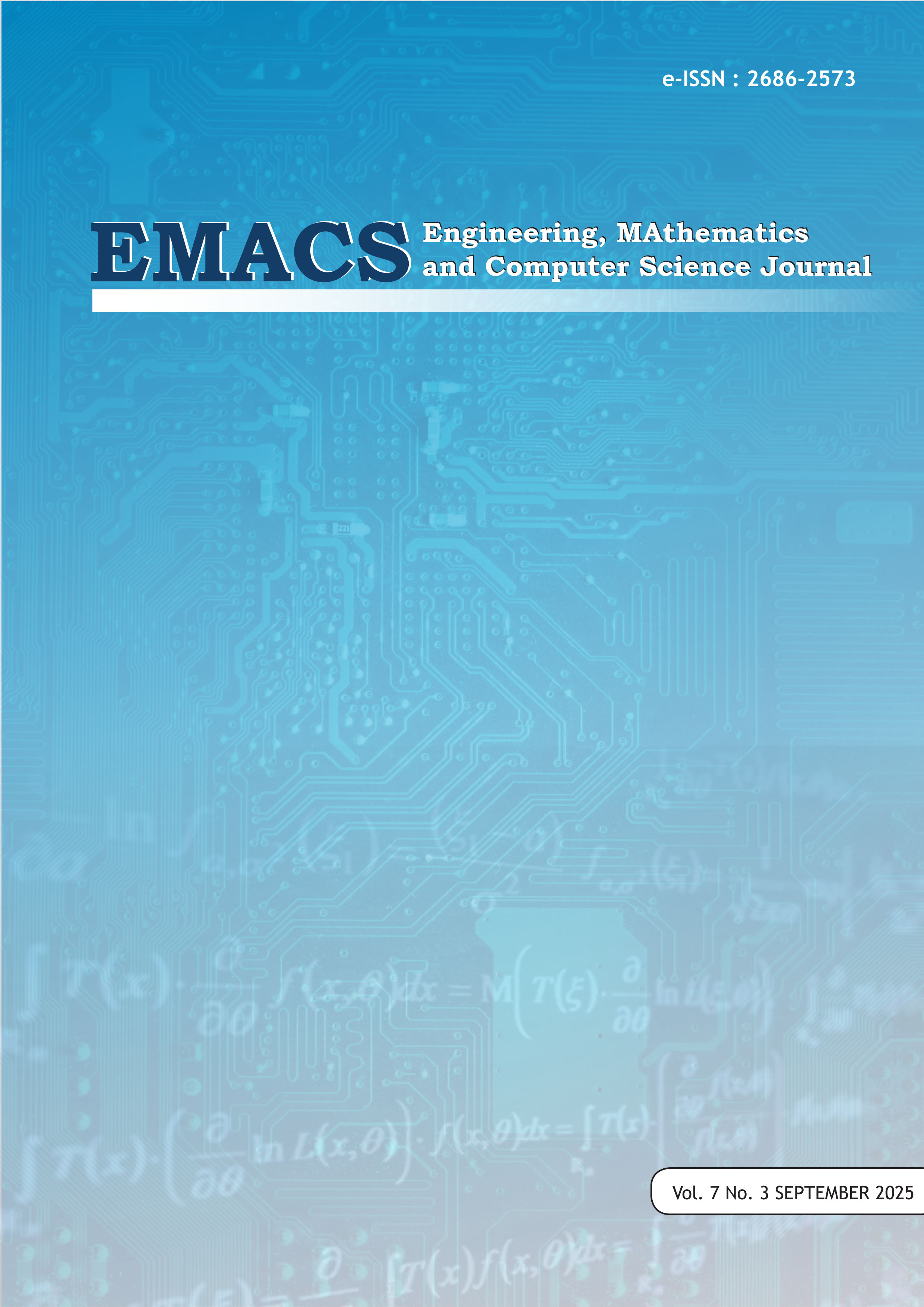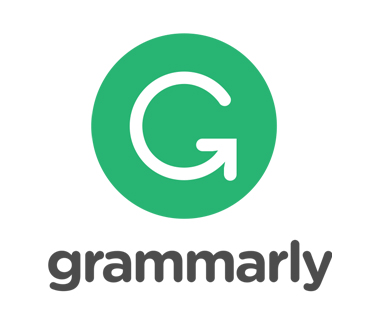Proof of Data Weigher Analysis (DWA) and Its Application to Dynamic Meta Data Weigher
DOI:
https://doi.org/10.21512/emacsjournal.v7i3.13155Keywords:
Data Weigher Analysis, Trading, Quantitative research, Average Data, Meta DataAbstract
Data Weigher Analysis (DWA) addresses the persistent problem of objectively quantifying whether the values in a data set lean more heavily toward the left or right side, a challenge that becomes increasingly complex in irregular or large-scale data sets. Motivated by the need for a simple yet rigorous quantitative framework, this study compares two DWA techniques—the data weighting method and the data mean difference method—designed to compute balance points in a sequence. The data weighting method assigns balanced linear weights to left and right subsets, whereas the data mean difference method calculates first- and second-order mean differences to capture asymmetry in data distribution. We provide a theoretical proof of equivalence between these two formulations, showing that the mean difference approach produces the same linear weighting as the original data weighting scheme. Building on this theoretical result, we introduce a sliding-window algorithm to operationalize DWA on large, dynamic data streams, allowing automated detection of local imbalances in real time. Empirically, we validate our approach on real-world metadata and trade datasets, comparing it against baseline descriptive statistics to assess efficiency and precision. Quantitative findings show that the mean difference method reduces computation processes without loss of accuracy compared with manual weighting. Overall, this work contributes to a unified theoretical foundation, a lightweight algorithmic implementation, and evidence of practical benefits for using DWA in decision-making contexts such as questionnaire analysis, market dynamics, and trade flow monitoring.
References
Goenawan, Stephanus Ivan. (2020). Comparison Simulation Analysis Of The Gradual Summation Of A Function With Recognition Of Direct Extrapolation Via IN Series. IJASST Univ. Sanata Dharma, Yogyakarta.
Goenawan, Stephanus Ivan. (September 2023). Efficient Computation of Number Fractions from the Square Root of Two Using the A-B Goen Number Function Via the Ivan Newton (in) Series, Engineering, Mathematics, and Computer Science (EMACS) Journal, Vol. 6 No. 3. hal 227 – 231, e-ISSN: 2686-2573.
Goenawan, Stephanus Ivan. (Januari 2021). Order Theory I And II As Foundations For Finding Relationship Between Formulas, Engineering, Mathematics, and Computer Science (EMACS) Journal, Vol. 2 No. 1. hal 1 – 4, p-ISSN 1410-2765.
Goenawan, S.I., Natalia, C., Sejahtera, F., & Angela. (Agustus 2021). A Balanced Analysis of the Positive and Negative Impacts of Digital Wallets (Analisa Timbangan Data Dampak Positif dan Negatif Dompet Digital). Prosiding Seminar Nasional Riset dan Teknologi Terapan (RITEKTRA), A2.1-A2.8.
Goenawan, S.I., Indriati, K. (Agustus 2022). Use of the In Series to Determine the Higher Order Mean of a Polynomial Function by Direct Means (Penggunaan Deret In Untuk Menentukan Rerata Orde Tinggi Fungsi Polinomial Dengan Cara Langsung). Prosiding Seminar Nasional Matematika, Geometri, Statistika, dan Komputasi SeNa-MaGeStiK Universitas Jember.
Harry N. Boone, Jr., Deborah A. Boone. (April 2012). Analyzing Likert Data. Journal of Extension. Volume 50 Number 2.
Heiberger, R. M.; Robbins, N. B. (2014). "Design of Diverging Stacked Bar Charts for Likert Scales and Other Applications". Journal of Statistical Software. Vol. 57. American Statistical Association. pp.1–32.
Johnson, R.L. and Morgan, G.B. (2016). Survey Scales: A Guide to Development Analysis and Reporting. The Guilford Press, New York, 70-89.
Krantz, Steven George (2006). Calculus: Single Variable, Volume 1. Springer Science & Business Media. p. 248.
McQuarrie, Donald A. (2003). Mathematical Methods for Scientists and Engineers, University Science Books. ISBN 978-1-891389-24-5
Pearse N. (2011). Deciding on the scale granularity of response categories of Likert type scales: The Case of a 21-Point Scale. Electronic Journal of Business Research Methods. 9(2):2011.
Robbins, N. B.; Heiberger, R. M. (2011). "Plotting Likert and Other Rating Scales". JSM Proceedings, Section on Survey Research Methods. American Statistical Association. pp. 1058–1066.
Raghavendra Dwivedi, Nagendra Nath Pandey., (2021). Analysis of Evaluation Data Collected on Likert Type Items: Humanities-Courses. Journal of Data Analysis and Information. Processing, 2021, 9, 102-121.
Salas, Saturnino L.; Hille, Einar; Etgen, Garret J. (2007). Calculus: One and Several Variables (10th ed.). Wiley.
Stewart, James (2012). Calculus: Early Transcendentals, 7th ed., Brooks Cole Cengage Learning. ISBN 978-0-538-497 90-9
Tsang KK. (2012). The use of midpoint on Likert scale: The implications for educational research. Hong Kong Teachers Centre Journal. 2012; 11:121-130.
Thomas, George B., Maurice D. Weir, Joel Hass, Frank R. Giordano (2008), Calculus, 11th ed., Addison-Wesley.
Wu, Chien-Ho. (2007). An Empirical Study on the Transformation of Likert-scale Data to Numerical Scores. Applied Mathematical Sciences, Vol. 1, 2007, no. 58, 2851 - 2862
Zill, Dennis G.; Wright, Scott; Wright, Warren S. (2009). Calculus: Early Transcenden-tals (3 ed.). Jones & Bartlett Learning. p. xxvii. ISBN 978-0-7637-59957.
Downloads
Published
How to Cite
Issue
Section
License
Copyright (c) 2025 Stephanus Ivan Goenawan

This work is licensed under a Creative Commons Attribution-ShareAlike 4.0 International License.
Authors who publish with this journal agree to the following terms:
- Authors retain copyright and grant the journal right of first publication with the work simultaneously licensed under a Creative Commons Attribution License - Share Alike that allows others to share the work with an acknowledgment of the work's authorship and initial publication in this journal.
- Authors are able to enter into separate, additional contractual arrangements for the non-exclusive distribution of the journal's published version of the work (e.g., post it to an institutional repository or publish it in a book), with an acknowledgment of its initial publication in this journal.
- Authors are permitted and encouraged to post their work online (e.g., in institutional repositories or on their website) prior to and during the submission process, as it can lead to productive exchanges, as well as earlier and greater citation of published work.
USER RIGHTS
All articles published Open Access will be immediately and permanently free for everyone to read and download. We are continuously working with our author communities to select the best choice of license options, currently being defined for this journal as follows: Creative Commons Attribution-Share Alike (CC BY-SA)





